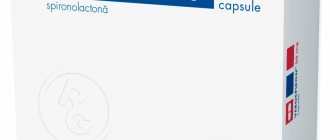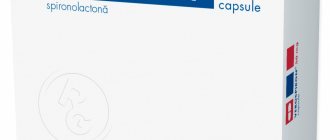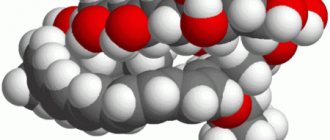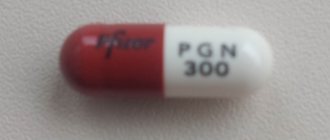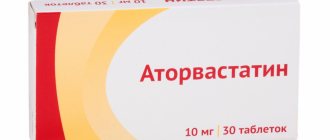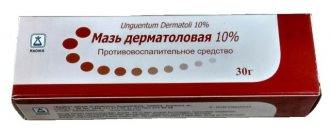Actemra is a drug used to treat advanced forms of rheumatoid arthritis. Available in the form of a solution, which is diluted with a 0.9% sodium chloride solution and administered intravenously (with a dropper). At the moment, it is difficult to find this medicine, and it costs about 15,000-20,000 rubles and more, which is associated with increased demand due to coronavirus infection.
Packaged in cardboard packs of 1 or 4 bottles each. The working solution is a colorless liquid with opalescence properties (scattering of light by large particles).
The drug is sold only with a prescription. It is stored in the refrigerator (dark place, temperature range from 2 to 8 degrees). Freezing is prohibited. Access by children should be excluded. The shelf life, provided the container remains intact, is 2.5 years from the date of production.
Indications and contraindications
The drug is used to treat rheumatoid arthritis in moderate and advanced stages. It is used as monotherapy, as well as in combination with a drug such as Methotrexate and other anti-inflammatory drugs.
There are several absolute contraindications in which the use of Actemra is excluded:
- active stage of development of infectious pathologies, including tuberculosis (you must first undergo fluorography to determine latent tuberculosis);
- hypersensitivity to the active substance of the drug or its additional components;
- immunization with a weakened vaccine (live viruses, bacteria, other infectious agents);
- period of pregnancy, breastfeeding (at any stage).
Use with caution is possible in the presence of the following pathologies:
- recurrent infection (chronic course);
- diabetes mellitus, diverticulitis and other pathologies that can provoke the development of infection;
- liver diseases;
- neutropenia.
Attention!
Overdose of the solution is not allowed. A violation was recorded in one case. The patient used a solution in an amount of 40 mg/kg body, and in his case there were no side effects. Healthy volunteers who received a solution in an amount of 28 mg/kg experienced symptoms of neutropenia (accompanied by an increased risk of developing infections).
Actemra (Tocilizumab) 400 mg for in. 20mg/ml 20ml No. 1 – Instructions
DOSAGE FORM AND PACKAGING
Concentrate for solution for infusion 400 mg/20 ml in bottle No. 1.
COMPOUND
1 vial contains 400 mg of tocilizumab.
PHARMACHOLOGIC EFFECT
Actemra is a specific immunosuppressive drug used in the treatment of rheumatoid arthritis with high/moderate activity. The drug is used both as a single agent and in combination with basic anti-inflammatory drugs. The active substance of Actemra, tocilizumab, is a recombinant humanized monoclonal antibody to the human interleukin-6 (IL-6) receptor from the IgG1 subclass of immunoglobulins.
Tocilizumab selectively binds to and inhibits both soluble and membrane IL-6 receptors (sIL-6R and mIL-6R). IL-6 is a multifunctional cytokine produced by various cell types involved in paracrine regulation, systemic physiological and pathological processes, such as stimulation of Ig secretion, activation of T cells, stimulation of the production of acute phase proteins in the liver and stimulation of hematopoiesis. IL-6 is involved in the pathogenesis of various diseases, including inflammatory diseases, osteoporosis and neoplasms.
INDICATIONS FOR USE
Rheumatoid arthritis with moderate or high activity in adults, both as monotherapy and in combination with methotrexate (MT) and/or with other disease-modifying anti-inflammatory drugs (DMARDs), including for the inhibition of radiologically proven joint destruction.
METHOD OF APPLICATION AND DOSES
Intravenous drip at a dose of 8 mg/kg for at least 1 hour once every 4 weeks. Actemra is diluted to 100 ml with a sterile 0.9% sodium chloride solution under aseptic conditions. Dose increases of more than 800 mg per infusion are not recommended for patients weighing more than 100 kg.
OVERDOSE
In case of overdose, neutropenia is possible, which may lead to dose reduction. Treatment is symptomatic.
USE IN PREGNANCY AND BREAST-FEEDING
Actemra should not be used during pregnancy and lactation, unless the expected benefit of therapy for the mother outweighs the potential risk to the fetus or child.
SIDE EFFECTS
Upper respiratory tract infections may occur when using Actemra; phlegmon, infections caused by Herpes simplex 1 and Herpes zoster; diverticulitis; oral ulcers, gastritis; stomatitis; rash, itching; hives; headache, dizziness; increased blood pressure; hypersensitivity reactions; leukopenia, neutropenia, hypercholesterolemia, increased activity of liver transaminases; hypertriglyceridemia, increased total bilirubin.
CONTRAINDICATIONS
Actemra is contraindicated if there is a history of hypersensitivity to tocilizumab or any component of the drug; active infectious diseases (including tuberculosis); in children under 2 years of age for patients with polyarticular juvenile idiopathic arthritis and systemic juvenile idiopathic arthritis; under the age of 18 for patients with rheumatoid arthritis; in combination with TNF-α inhibitors or use within 1 month after treatment with anti-TNF antibodies.
SPECIAL WARNINGS
Actemra should be used with caution if there is a history of recurrent infections, concomitant diseases that predispose to the development of infections (including diverticulitis, diabetes mellitus), active liver disease or liver failure, neutropenia, viral hepatitis, demyelinating diseases.
Patients with active infectious diseases should not begin treatment with Actemra.
If latent tuberculosis is detected, a standard course of antimycobacterial therapy should be administered before starting treatment with Actemra.
Immunization with live and live attenuated vaccines should not be administered concomitantly with Actemra therapy.
Lipid metabolism should be assessed 4–8 weeks after initiation of Actemra therapy.
SHELF LIFE AND STORAGE CONDITIONS
Store in a place protected from light at a temperature of 2° to 8°C. Shelf life: 2 years 6 months.
VACATION CATEGORY
On prescription.
Side effects
In most cases, taking the drug does not cause side effects. But sometimes the following manifestations are observed:
- infection of the upper respiratory tract;
- itching, rash, less often urticaria;
- headaches;
- dizziness;
- increased blood pressure;
- hypersensitivity reactions.
If side effects occur, you must stop taking the drug and undergo treatment. If the condition worsens, seek emergency medical attention.
Literature
- Moore JB, June CH Cytokine release syndrome in severe COVID-19. Science. 2020; 368(6490): 473–474. DOI:1126/science.abb8925
- Song P., Li W., Xie J., et al. Cytokine storm induced by SARS-CoV-2. Clin Chim Acta. 2020; 509:280–287. DOI: 10.1016/j.cca.2020.06.017
- Zhao Z., Wei Y., Tao C. An enlightening role for cytokine storm in coronavirus infection. Clin Immunol. 2021; 222: DOI: 10.1016/j.clim.2020.108615
- Lavillegrand JR, Garnier M, Spaeth A et al. Elevated plasma IL-6 and CRP levels are associated with adverse clinical outcomes and death in critically ill SARS-CoV-2 patients: inflammatory response of SARS-CoV-2 patients. Ann Intensive Care. 2021; 11(1): 9. DOI: 10.1186/s13613-020-00798-x
- Potempa LA, Rajab IM, Hart PC, et al. Insights into the Use of C-Reactive Protein as a Diagnostic Index of Disease Severity in COVID-19 Infections, Am J Trop Med Hyg. 2020; 103(2): 561–563. DOI: 10.4269/ajtmh.20-0473
- Yonas E., Alwi I., Pranata R., et al. Elevated interleukin levels are associated with higher severity and mortality in COVID 19. A systematic review, meta-analysis, and meta-regression. Diabetes Metab Syndr. Nov-Dec 2020; 14(6): 2219–2230. DOI: 10.1016/j.dsx.2020.11.011
- Conti P., Ronconi G., Caraffa A., et al. Induction of proinflammatory cytokines (IL-1 and IL-6) and lung inflammation by COVID-19: antiinflammatory strategies. J Biol Regul Homeost Agents. 2020; 4(2): 327–331. DOI: 10.23812/CONTI-E
- Moradian N., Gouravani M., Salehi MA, et al. Cytokine release syndrome: inhibition of pro-inflammatory cytokines as a solution for reducing COVID-19 mortality. Eur. Cytokine Netw. 2020; 31(3): 81–93. DOI: 10.1684/ecn.2020.0451
- Pum A., Ennemoser M., Adage T., Kungl AJ Cytokines and Chemokines in SARS-CoV-2 Infections—Therapeutic Strategies Targeting Cytokine Storm. Biomolecules. 2021; 11(1): DOI: 10.3390/biom11010091
- Chen J., Zhang L., Hou H., et al. Interleukin 6 signaling blockade treatment for cytokine release syndrome in COVID 19 (Review). Exp Ther Med. 2021; 21(1): 24. DOI: 10.3892/etm.2020.9456
- Crisafulli S., Isgrò V., La Corte L., et al. Potential Role of Anti-interleukin (IL) 6 Drugs in the Treatment of COVID 19: Rationale, Clinical Evidence and Risks. BioDrugs. 2020; 34(4): 415–422. DOI: 10.1007/s40259-020-00430-1
- Hashizume M. Outlook of IL-6 signaling blockade for COVID-19 pneumonia. Inflamm Regen. 2020; 40: DOI: 10.1186/s41232-020-00134-7
- Nasonov E., Samsonov M. The role of Interleukin 6 inhibitors in therapy of severe COVID-19. Biomed Pharmacother. 2020; 131: DOI: 10.1016/j.biopha.2020.110698
- Zhou Z., Price C. Overview on the use of IL-6 agents in the treatment of patients with cytokine release syndrome (CRS) and pneumonitis related to COVID-19 disease. Expert Opin Investig Drugs. 2020; 29(12): 1407–1412.DOI: 10.1080/13543784.2020.1840549
- Salvarani C., Dolci G., Massari M., et al. Effect of tocilizumab vs standard care on clinical worsening in patients hospitalized with COVID-19 pneumonia: A Randomized Clinical Trial. JAMA Intern Med. 2021; 181(1): 24–31. DOI: 10.1001/jamainternmed.2020.6615
- CORIMUNO-19 Collaborative group. Effect of anakinra versus usual care in adults in hospital with COVID-19 and mild-to-moderate pneumonia (CORIMUNO-ANA-1): a randomized controlled trial. Lancet Respir Med. 2021; 9(3): 295–304. DOI: 10.1016/S2213-2600(20)30556-7
- Stone JH, Frigault MJ, Serling-Boyd NJ, et al. Efficacy of Tocilizumab in Patients Hospitalized with Covid-19. N Engl J Med. 2020; 383(24): 2333–2344. DOI: 10.1056/NEJMoa2028836
- Nugroho CW, Suryantoro SD, Yuliasih Y., et al. Optimal use of tocilizumab for severe and critical COVID-19: a systematic review and meta-analysis F1000 Research 2021, 10:73 Proc Natl Acad Sci US A. 2020; 117(20): 10970–10975. DOI: 10.1073/pnas.2005615117
- Kow CS, Hasan SS The effect of tocilizumab on mortality in hospitalized patients with COVID-19: a meta-analysis of randomized controlled trials. Eur J Clin Pharmacol. 2021; 1–6. DOI: 10.1007/s00228-021-03087-z
- Berardicurti O., Ruscitti P., Ursini F., et al. Mortality in tocilizumab-treated patients with COVID-19: a systematic review and meta-analysis. Clin Exp Rheumatol. 2020; 38(6): 1247–1254.
- Kim MS, An MH, Kim WJ et al. Comparative efficacy and safety of pharmacological interventions for the treatment of COVID-19: A systematic review and network meta-analysis. PLoS Med. 2020; 17(12): e1003501. DOI: 10.1371/journal.pmed.1003501
- The REMAP-CAP Investigators, Gordon AC, Mouncey PR, et al. Interleukin-6 Receptor Antagonists in Critically Ill Patients with Covid-19 — Preliminary report. MedRxiv. 2021. DOI: 10.1101/2021.01.07.21249390
- Knight SR, Ho A, Pius R, et al. Risk stratification of patients admitted to hospital with covid-19 using the ISARIC WHO Clinical Characterization Protocol: development and validation of the 4C Mortality Score. BMJ. 2020; 370:m3339. DOI: 10.1136/bmj.m3339
- Catoire P., Tellier E., de la Rivière C., et al. Assessment of the SpO2/FiO2 ratio as a tool for hypoxemia screening in the emergency department. Am J Emerg Med. 2021; 44: 116–120. DOI: 10.1016/j.ajem.2021.01.092
- Wang X., Kattan M. W. Cohort Studies: Design, Analysis, and Reporting. Chest, 2020; 158(1S): S72– DOI: 10.1016/j.chest.2020.03.014
- Burmester GR, Rubbert-Roth A, Cantagrel A, et al. A randomized, double-blind, parallel-group study of the safety and efficacy of subcutaneous tocilizumab versus intravenous tocilizumab in combination with traditional disease-modifying antirheumatic drugs in patients with moderate to severe rheumatoid arthritis (SUMMACTA study). Ann Rheum Dis. 2014; 73(1): 69–74. DOI: 10.1136/annrheumdis-2013-203523
- Le RQ, Li L, Yuan W, et al. FDA approval summary: tocilizumab for treatment of chimeric antigen receptor T cell-induced severe or life-threatening cytokine release syndrome. Oncologist. 2018; 23(8): 943–947. DOI: 10.1634/theoncologist.2018-0028. Epub 2021 Apr 5.
- Kaminski M., Sunny S., Balabayova K., et al. Tocilizumab therapy for COVID-19: A comparison of subcutaneous and intravenous therapies. Int J Infect Dis. 2020; 101:59–64. DOI: 10.1016/j.ijid.2020.09.1447
- Navas N., Hermosilla J., Torrente-López A., et al. Use of subcutaneous tocilizumab to prepare intravenous solutions for COVID-19 emergency shortage: Comparative analytical study of physicochemical quality attributes. J Pharm Anal. 2020; 10(6): 532–545. DOI: 10.1016/j.jpha.2020.06.003
- Potere N., Di Nisio M., Rizzo G., et al. Low-dose subcutaneous tocilizumab to prevent disease progression in patients with moderate COVID-19 pneumonia and hyperinflammation. International Journal of Infectious Diseases. Int J Infect Dis. 2020; 100:421–424. DOI: 10.1016/j.ijid.2020.07.078
- Mazzitelli M., Arrighi E., Serapide F., et al. Use of subcutaneous tocilizumab in patients with COVID‐19 pneumonia. J Med Virol. 2021; 93(1): 32–34. DOI: 10.1002/jmv.26016
- Greco G., Ripamonti D., Binda F., et al. Potential Role of Subcutaneous Tocilizumab Injections in Patients With COVID-19 associated Pneumonia. J Med Virol. 2021; 93(2): 686–688. DOI: 10.1002/jmv.26494
- Mastroianni A., Greco S., Apuzzo G., et al. Subcutaneous tocilizumab treatment in patients with severe COVID-19 related cytokine release syndrome: An observational cohort study. EClinicalMedicine. 2020; 24: 100410. DOI: 10.1016/j.eclinm.2020.100410
- Di Nisio M., Potere N., Candeloro M., et al. Interleukin-6 receptor blockade with subcutaneous tocilizumab improves coagulation activity in patients with COVID-19. Eur J Intern Med. 2021; 83: 34–38. DOI: 10.1016/j.ejim.2020.10.020
- Ganyukova N.G., Likstanov M.I., Kosinova M.V. and etc. The effectiveness of targeted therapy with an IL-6 inhibitor (olokizumab) in relieving hyperinflammation in moderate pneumonia caused by the Sars-Cov-2 virus. Fundamental and clinical medicine. 2020; 5(4): 8–13.
- Tsvetov V.M., Matveev A.V., Sychev D.A. The feasibility of routine use of the drug olokizumab for COVID-19. Quality clinical practice. 2020; S4: 68–70.
- Potere N., Di Nisio M., Cibelli D., et al. Interleukin-6 receptor blockade with subcutaneous tocilizumab in severe COVID-19 pneumonia and hyperinflammation: a case–control study. Ann Rheum Dis. 2021; 80(2): 1–2. DOI: 10.1136/annrheumdis-2020-218243
- Malekzadeh R., Abedini A., Mohsenpour B., et al. Subcutaneous tocilizumab in adults with severe and critical COVID-19: A prospective open-label uncontrolled multicenter trial. Int Immunopharmacol. 2020; 89(Pt B): 107102. DOI: 10.1016/j.intimp.2020.107102
- Guaraldi G., Meschiari M., Cozzi-Lepri A., et al. Tocilizumab in patients with severe COVID-19: a retrospective cohort study. Lancet Rheumatol. 2020; 2(8): e474–e484. DOI: 10.1016/S2665-9913(20)30173-9
- De Rossi N., Scarpazza C., Filippini C., et al. Montichiari COVID-19 Study Group. Early use of low dose tocilizumab in patients with COVID-19: A retrospective cohort study with a complete follow-up. EClinicalMedicine. 2020; 25: DOI:10.1016/j.eclinm.2020.100459
- Sciascia S., Aprà F., Baffa A., et al. Pilot prospective open, single-arm multicentre study on off-label use of tocilizumab in severe patients with COVID-19. Clin Exp Rheumatol. 2020; 38(3): 529–532.
- Takeuchi T, Smolen JS, Choy EH, et al. Considering new lessons about the use of IL-6 inhibitors in arthritis. Considerations in Medicine. 2018; 2:7–11. DOI: 10.1136/conmed-2018-000002
- Smolen JS, Aletaha D, Choy EH, et al. Targeting IL-6: A review of data. Considerations in Medicine. 2018; 2: 12–18. DOI: 10.1136/conmed-2018-000003
- Ministry of Health of Russia. Temporary guidelines “Prevention, diagnosis and treatment of new coronavirus infection (COVID-19)” version 10 (02/08/2021) [Electronic resource]. Access mode: https://staticminzdrav.gov.ru/system/attachments/attaches/000/054/588/original/%D0%92%D1%80%D0%B5%D0%BC%D0%B5%D0% BD%D0%BD%D1%8B%D0%B5_%D0%9C%D0%A0_COVID-19_%28v.10%29-02/08/2021_%281%29.pdf. Link active as of 03/03/2021. . Access mode of the Ministry of Health of Russia Temporary guidelines “Prevention, diagnosis and treatment of new coronavirus infection (COVID-19)” version 10 (02/08/2021) . Available from: https://static0.minzdrav.gov.ru/system/attachments/attaches/000/054/588/original/%D0%92%D1%80%D0%B5%D0%BC%D0%B5% D0%BD%D0%BD%D1%8B%D0%B5_%D0%9C%D0%A0_COVID-19_%28v.10%29-02/08/2021_%281%29.pdf (accessed 03/03/2021). (In Russ)]
- Rudnov V.A., Kulabukhov V.V. SEPSIS-3: Updated key messages, potential problems and next practical steps. Bulletin of anesthesiology and resuscitation. 2016; 13(4): 4–11.
Instructions for use "Actemra"
The solution is given as an intravenous injection or as a dropper for 60 minutes, maximum once a month. The drug is diluted to a total volume of 100 ml using saline solution of 0.9% sodium chloride. To do this, it is necessary to treat the surface of the skin with alcohol or another antiseptic.
When preparing the solution, follow the following instructions:
- Measure out the required amount of the drug in the amount of 0.4 ml per 1 kg of body weight.
- Take a disposable syringe and withdraw 100 ml of 0.9% sodium chloride solution.
- Another disposable syringe is used to measure the Actemra solution.
- After this, mix the working solution with a sodium chloride solution.
- Mix thoroughly, carefully turning the bag up and down. In this case, it is important to avoid foaming and check the contents of the package (visually) for the absence of any particles or suspension.
- You also need to make sure that the solution is colorless or has a faint light yellow color.
- Turn the bag over and insert an IV.
Research results
The patients of all three groups included in the analysis were comparable in age and gender. There were no statistically significant differences in the average time of drug administration from the onset of the disease, the volume of damage to the lung parenchyma, according to CT data, and the content of C-reactive protein before and 24 hours after drug administration (Table 1).
Table 1. Main characteristics of patients in the compared groups
Table 1. The main characteristics of patients in the compared group
| Index | Tocilizumab SC | Tocilizumab IV | Levilimab | Olokizumab | R |
| Number of patients | 114 | 86 | 100 | 100 | no difference |
| Average age, years* | 64,5 ± 13,4 | 64,7 ± 13,5 | 65,5 ± 13,5 | 67,0 ± 12,3 | 0,39 |
| Men/women | 71/43 | 35/51 | 42/58 | 49/51 | 0,39 |
| Time of administration from the moment of hospitalization, days** | 2 (1) | 8 (4) | 2 (2) | 2 (2) | 0,14 |
| The degree of lung damage according to the empirical visual scale (CT) | 2 (1) | 2 (1) | 2 (1) | 2 (1) | no difference |
| CRP before administration, mg/l** | 100 (77) | 110 (79) | 106 (79) | 115 (92) | 0,41 |
| CRP 24 hours after administration, mg/l** | 67 (87) | 70 (92) | 63 (82) | 69 (69) | 0,99 |
* The result is presented as: mean value ± standard deviation.
** The result is presented as the median of the interquartile range.
When analyzing the “Lethal outcome” indicator depending on the drug administered (tocilizumab, olokizumab, levilimab), we were unable to identify significant differences (p = 0.259, Fisher’s exact test for multifield tables) (Table 2). Comparisons of percentages in the analysis of multifield contingency tables were performed using Fisher's exact test. Post hoc comparisons were performed using Pearson's χ2 test with Holm's correction.
Table 2. Analysis of the “Lethal outcome” indicator depending on the administered drug
Table 2. Analysis of the “Lethal outcome” indicator depending on the injected drug
| A drug | Result | p | |
| Discharged | Death | ||
| Tocilizumab | 186 (93)* | 14 (7) | 0,26 |
| Olokizumab | 95 (95) | 5 (5) | |
| Levilimab | 89 (89) | 11 (11) | |
* The percentage is given in parentheses.
When assessing the outcome “Sepsis” depending on the drug administered, we were unable to establish statistically significant differences (p = 0.587, Fisher’s exact test for multi-field tables) (Table 3). As a quantitative measure of the effect when comparing relative indicators, we used the OR indicator with a 95% confidence interval (95% CI).
Table 3. Analysis of the “Sepsis” indicator depending on the drug administered
Table 3. Analysis of the “Sepsis” indicator depending on the injected drug
| A drug | Result | p | |
| No sepsis | Sepsis | ||
| Tocilizumab | 192 (96) | 8 (4) | 0,59 |
| Olokizumab | 97 (97) | 3 (3) | |
| Levilimab | 94 (94) | 6 (6) | |
An analysis of the Sepsis indicator was carried out depending on the subcutaneous or intravenous administration of tocilizumab (Table 4). When assessing the Sepsis indicator depending on the route of administration of tocilizumab, it was not possible to detect statistically significant differences (p = 0.293, Fisher's exact test). The odds of sepsis in the subcutaneous tocilizumab group were 2.28 times lower compared with the intravenous tocilizumab group, and the odds difference was not statistically significant (OR = 0.44; 95% CI 0.1–1.88). When assessing the “Lethal outcome” indicator depending on the route of administration, it was not possible to identify statistically significant differences (p = 0.279, Fisher’s exact test). The odds of dying in the subcutaneous group were 1.85 times lower compared to the intravenous group, and the difference in odds was not statistically significant (OR = 0.54; 95% CI 0.18–1.62) (Table 5).
Table 4. Analysis of the Sepsis indicator depending on the route of administration of tocilizumab
Table 4. Analysis of the “Sepsis” indicator depending on the way of injected drug tocilizumab
| Route of administration | Result | p | |
| No sepsis | Sepsis | ||
| IV | 81 (94,19) | 5 (5,81) | 0,29 |
| PC | 111 (97,37) | 3 (2,63) | |
Table 5. Analysis of the “Lethal outcome” indicator depending on the route of administration of tocilizumab
Table 5. Analysis of the indicator “Lethal outcome” depending on way of injection tocilizumab
| Route of administration | Death | p | |
| Discharged | Deceased | ||
| IV | 78 (90,7) | 8 (9,3) | 0,28 |
| PC | 108 (94,74) | 6 (5,26) | |
Drug interactions and special instructions
Actemra should be used with caution in combination with drugs that are labeled CYP. Also, the use of Actemra requires careful monitoring of patients who use or have previously used the following drugs:
- "Atorvastatin";
- "Warfarin";
- "Fenitonn";
- "BKK";
- "Cyclosporine";
- "Theophylline";
- benzodiazepine-based drugs.
Since Actemra weakens the therapeutic effect of these drugs, you may need to increase the dosage (in consultation with your doctor). It is also important to understand that the active ingredient in Actemra (tocilizumab) is eliminated slowly, so its indirect effects on the body may persist for several weeks after complete withdrawal.
Taking the drug during pregnancy and lactation is undesirable, since it can affect the child’s immune system and the characteristics of intrauterine development.
conclusions
The use of different drugs of monoclonal antibodies against IL-6 in patients with severe COVID-19 did not reveal significant differences in lethal outcomes between tocilizumab, levilimab and olokizumab. The identified differences between drugs in the incidence of sepsis and death require further randomized controlled trials.
Conflict of interest. The authors declare no conflict of interest.
Authors' contributions. Bobkova S.S., Zhukov A.A., Protsenko D.N., Samoilenko V.V., Tyurin I.N. — development of the concept of the article, obtaining and analyzing factual data, writing and editing the text of the article, checking and approving the text of the article.
ORCID of authors
Bobkova S.S.
Zhukov A.A.
Protsenko D.N.
Samoilenko V.V.
Tyurin I.N.
